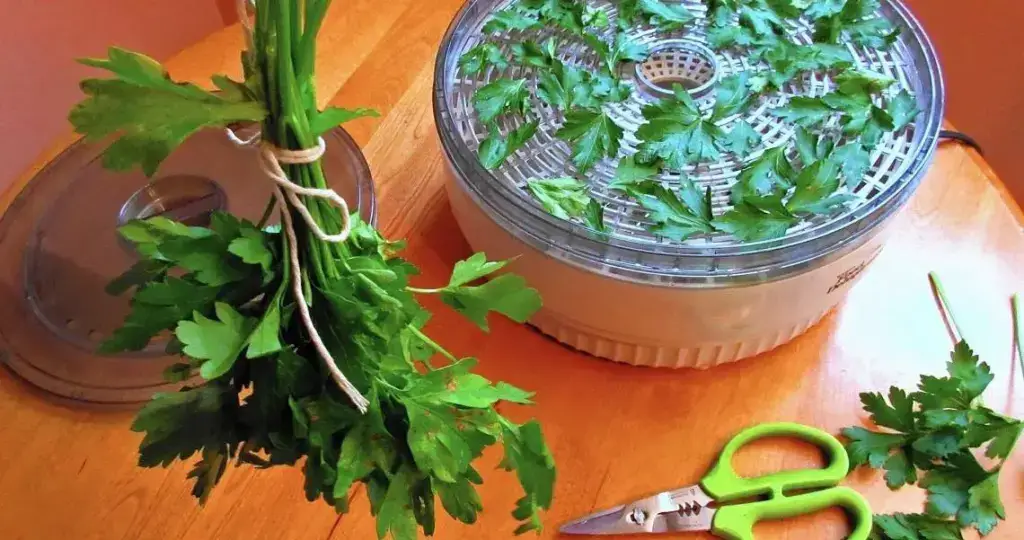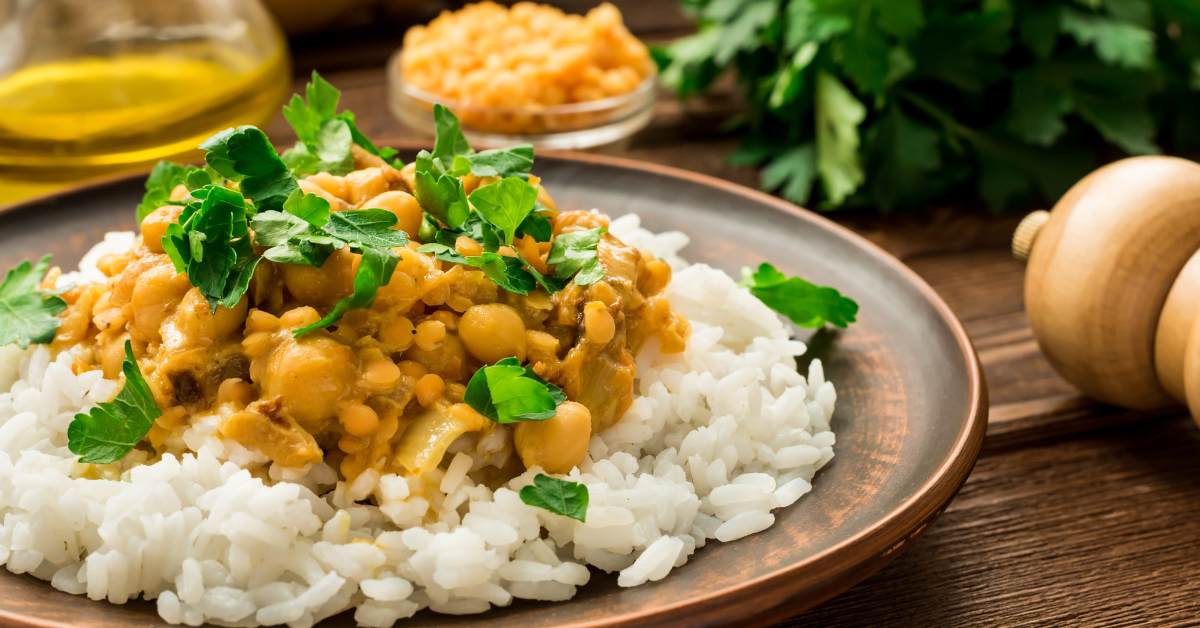Drying parsley allows it to keep its flavor for extended periods without going bad, and it’s almost effortless!
Parsley is one of those herbs that can fit into any recipe and take it up a notch. The green color and unique taste it adds to any plate are unmatchable, to say the least.
Whether you have a dehydrator, a microwave, or just the good ol’ oven, you can dry parsley at home pretty easily.
You could also take the long (but easy) route of air-drying. Here are all the methods thoroughly explained, so you can pick whichever is most convenient for you.
First of All, Prep the Parsley
If you’re collecting parsley from your own garden, make sure you harvest the herbs as late in the morning as possible to make sure they’re dry.
Using cold water, rinse it gently but thoroughly to remove any dirt. After that, use a paper towel to dry the parsley using patting motions. Really it’s best to let it dry overnight whenever possible.
Different Methods of Drying Parsley
How to Dry Parsley in a Microwave
The fastest way to dry parsley is to use the microwave. However, it’s also the riskiest way because your parsley can get burned pretty quickly. So, make sure you follow the steps carefully for the best results.
On a microwavable plate, place one sheet of paper towel and lay the parsley on the sheet. Make sure you only have one layer – don’t stack pieces! On top, place another sheet of paper towel, and it’s ready to go in the microwave.
Microwave your plate for one minute, then check and see how dry it is. Usually one minute is not enough, and two minutes is too long. I recommend microwaving your parsley for a full minute, then start adding 10-20 second-intervals until your parsley is dried but not burned. You’ll know it’s ready when the leaves are brittle and crumbling when you touch them.
When done, separate the leaves from the stems into a bowl and get rid of the stems. Use your hands or a spoon to crumble dried parsley into smaller pieces, and you’re all done!
Drying Parsley in the Oven
First and foremost, lay your parsley on a baking sheet in a single layer. Make sure you don’t overlap or stack parsley pieces on top of each other, or they may not dry properly.
Place the parsley into the oven on the lowest temperature setting possible. The preferred temperature for drying parsley is around 170 degrees.
Leave the parsley in the over for 20 minutes, then start checking on it every 5-10 minutes until dry. Like I said before, you can tell the parsley is done when the leaves start crumbling.
Air-Drying Parsley
As the name implies, air-drying parsley is as simple as can be. First of all, gather some of your fresh parsley and tie the stems together using a rubber band. Make sure the bundles are secure but not too tight to the point where the stem gets damaged.
After that, use the rubber bands to hang the herb upside down. Make sure to hang in a warm, dry place. So avoid hanging it in an area that gets a lot of humidity or rain.
Leave your parsley hanging for about two weeks. You can wrap a bag around it if the leaves start falling and crumbling, but make sure the bag has holes to allow enough airflow.
You can also use one of these mesh air dryers:
Prices pulled from the Amazon Product Advertising API on:
Product prices and availability are accurate as of the date/time indicated and are subject to change. Any price and availability information displayed on [relevant Amazon Site(s), as applicable] at the time of purchase will apply to the purchase of this product.
Drying Parsley in the Sun
If you like the more nature-based method of drying parsley, but don’t want to wait two weeks, there’s a way to dry parsley in a matter of hours using the warmth of the sun!
If it’s a warm, dry day outside, you can lay the herbs on a baking sheet and leave it in the sun. Just make sure your parsley pieces don’t overlap so that every leaf gets enough sun exposure to dry properly.
As you can guess by now, after the parsley is done drying, crumble the leaves into your container of choice and remove the stems.
However, keep in mind that this method requires a lot of sun. If the day is partially cloudy, I strongly recommend following another method or waiting for a warm, sunny day. And some climates just aren’t conducive to sun drying – like humid Florida, for example.
Drying Parsley Using a Dehydrator
If you’re someone who dries herbs often, investing some money in a dehydrator could be life-changing for how easy and quick it is.
Most dehydrators have a setting for herbs, so just use that. It’s usually in the 130 degree range. Timing will depend on current weather conditions and humidity levels, but you can expect it to be done in 4-6 hours.
If you don’t already have one, this is a good model:
Prices pulled from the Amazon Product Advertising API on:
Product prices and availability are accurate as of the date/time indicated and are subject to change. Any price and availability information displayed on [relevant Amazon Site(s), as applicable] at the time of purchase will apply to the purchase of this product.
Storing Dried Parsley
Alright, you now have the dried parsley all done and ready to go, but now what? Well, you need to be careful when storing dried herbs in general because exposing them to humidity can rehydrate them, which is counterproductive.
I strongly recommend storing dried parsley in an air-tight container to protect it from environmental conditions. You can use a mason jar, a plastic box, or any container with a lid.
Additionally, keep the container in a cool, dark place, like a drawer, and don’t leave them near the stove where there’s a lot of heat and steam. Dried parsley can last for a year and keep its unique flavor.
While it wouldn’t exactly go bad when the year is up, it’ll start to lose its potency and become dull.
Frequently Asked Questions
What is the best way to preserve fresh parsley?
I’m obviously obsessed with dehydrating so I’d say that’s the best way for long-term preservation. But if you just wan to store fresh parsley, then you can take an ice cube tray, place chopped parsley leaves in each cube, pour olive oil over them until just covered, and freeze. When ready to use, just pop them out! About 2 cubes is usually enough for a recipe in a medium sized skillet or casserole dish.
Can I dry parsley in an air fryer?
You can certainly use an air fryer, but it’s not the best drying method. If you want to try it, set your air fryer to preheat at 360 degrees and the timer for 3 minutes.











